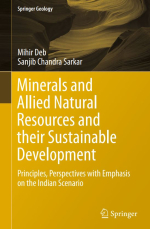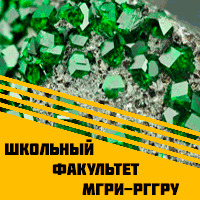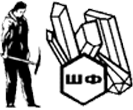Добрый день, Коллеги. Важное сообщение, просьба принять участие. Музей Ферсмана ищет помощь для реставрационных работ в помещении. Подробности по ссылке
Minerals and allied natural resources and their sustainable development. Principles, perspectives with emphasis on the Indian Scenario / Полезные ископаемые и связанные с ними природные ресурсы и их устойчивое развитие. Принципы, перспективы
Minerals, both metallic and nonmetallic, and building stones have played key role in shaping human civilization since ancient times. Demand for and production of these earth resources increased manifold during the Industrial Revolution and both have seen an exponential growth during the last century, keeping pace with growing national and global economies. Ever-widening base of mineral use has made minerals an integral part of our everyday life. Mineral deposits are basically geochemical anomalies of one or more metals in a section of the earth’s crust produced by igneous, metamorphic, and sedimentary processes, either individually or in conjunction. They become economic deposits or ore deposits if they can be worked at a profit, given the economic, sociopolitical, and technological situation at a place. Also crucial in this respect are the grades and tonnage of the deposit, and the cut-off grade of the metal in question. The process of ore formation is best understood by assessing the nature and geological characteristics of an ore deposit, among other features. The deposit may be dispersed or confined, epigenetic or syngenetic, and stratiform or stratabound. Each of such features, as well as the morphology of the ore body, will throw light on the endogenous or exogenous ore-forming environment prevailing in the lithosphere during the ore-forming time. Any large body of information about a population in Natural Sciences needs to be grouped or classified in terms of similarities and contrast. In a population of ore deposits, no two deposits are exactly identical. When we group them according to their characteristics, we have a classification scheme. But when we specify which characteristics are essential to belong to a group, we have the basis for a mineral deposit model. Many classification schemes, mostly genetic, have been proposed since the beginning of the last century, culminating in the UNFC scheme of 2009. A classification scheme that integrates host rocks and tectonic setting are most useful. Thus, tectono-lithological classification schemes are now more popular since genetic classifications are often fraught with controversies. However, magmatic, metamorphic, and sedimentary ore deposits still provide the best overall classification. Based on the current understanding of mineral-forming processes and products, a new scheme of classification has been proposed in this book. The mineral deposit models, on the other hand, are based on both regional and local attributes of deposits. <...>




